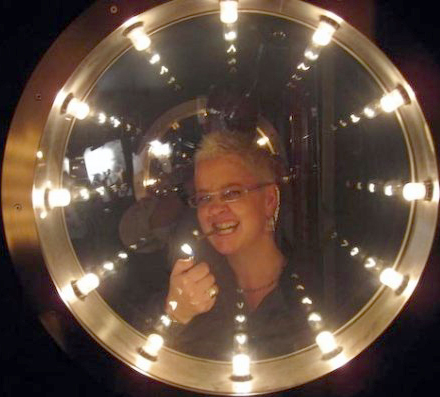
I went to Amsterdam earlier this month, with the Gridiron gang, to attend IBC 2009. I had several meetings to attend, demo’s to do and an interview or two to give. So I packed my suitcase with all my usual accoutrements, everything I would need for a business trip in a distant land! I get especially nervous when packing for a trip like this, what should I bring, and what is it OK to leave behind?
These seem like life-threatening decisions in terms of the anxiety they produce. The bag mustn’t be too heavy, otherwise I may aggravate my old shoulder injury. On the other hand, I mustn’t be caught short in front of my colleagues by forgetting a vitally important piece of equipment. I need to make sure I have backups of every item in case a cable stops functioning, or a hard drive breaks down so I usually pack two of each small item. Bigger items, like my Macbook Pro cannot be duplicated so they are packed in my carry on bag along with other fragile items.
Then there’s the bloody palaver with liquids to contend with! Do I take shampoo, or do I use the crappy ones the hotels provide? And what about conditioner? I’ve just had a fresh bleach-job done on my hair so I’ll need that too. So I pack all the lotions and potions I could possibly need, end up using a very small percentage of them, and then over-packing my bag for the journey home with more bad-quality toiletries pilfered from the hotels, it’s craziness. Plus, I’m always tempted by those cute little 100 ml containers of essential gunk that they sell to us in the airports – Listerine have made a fortune out of me in the last six months!
Anyway, after a day of decision-making, un-making, then re-making. Irritating my partner with “do you think I’ll need this?” every two minutes. I finally decide on the perfectly packaged selection of items and board the plane with a sense of relief. Time for my customary British Airways G&T, I can finally relax. “I’m sorry Madam (I hate being called Madam!) we no longer serve ice and lemon in standard class” I’m told by the air steward. So, my one solitary treat that I allow myself to make the ordeal of packing and flying bearable has now been removed by British Airways and their continual penny-pinching ways. That’s it, the straw that finally broke the camels back, I’ve flown with BA regularly for years but that’s it, no more am I paying a premium for a service that’s no better than the budget airlines. Sorry, digressing but had to get that off my chest! I mean, it’s not a G&T without ice and lemon, really!
years but that’s it, no more am I paying a premium for a service that’s no better than the budget airlines. Sorry, digressing but had to get that off my chest! I mean, it’s not a G&T without ice and lemon, really!
So, finally I make it to Amsterdam and the RAI where I’ve attended IBC, and other events for the last 12 years. I love this city, and it’s people. In fact if I was to live anywhere else in the world than my dear, dear Brighton, it would be Amsterdam. IBC was really good for us at GridIron, we were partnering with Apple on a few events and briefings at the Miranda Pavilion which were very well attended by an excellent, highly qualified group of individuals. We showed Flow and had amazing responses from them. Apple also hosted a party for us at the pavilion where Mark Coleran gave an excellent presentation on his journey from Screen Designer on Holywood movies to becoming the graphical interface designer of Flow.
I also saw some cool stuff, I was impressed by JVC’s HM series of cameras (and I’m a Sony-girl!) These cameras record direct to SD cards in MPEG (for ingest through Log and transfer) or Quicktime for direct drag and drop into the Final Cut Pro timeline. Very nice indeed. Adobe Story looks like an interesting product for scriptwriters, a new market for Adobe, interesting to see how it fairs. Object Matrix is a compelling product that you must see if you’re at all interested in affordable, scalable, secure storage, they make it a piece of cake. And of course the improvements made to Apple’s own Final Cut Studio and Final Cut Server continue to impress.
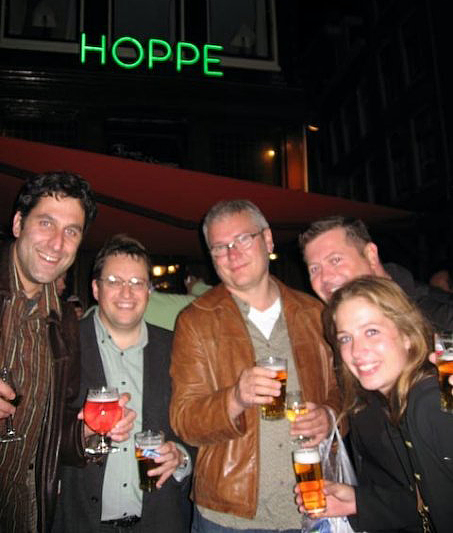
So, of course I came home with a much heavier suitcase, packed with brochures, receipts, giveaways and all sorts of other flotsam and jetsam. That was two weeks ago and I’m only just unpacking now! In fact I’ve done two other events since returning, have stayed in two other hotels and now have two suitcases to unpack! It’s a sorry state of affairs when you have to have rotating suitcases – two cases, each with enough clothing, toiletries and other essentials so that you can leave on a second trip before you feel like you’ve completed the first. I really am a trolley-demo-dolly!
Angie’s shuffle track of the day – Another Girl, Another Planet, The Only Ones – Listen free on Last FM
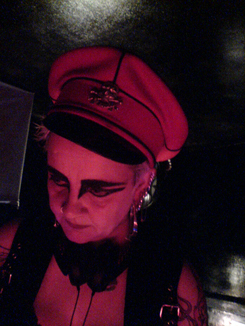
I’ve had many careers in my lifetime, one of them being a deejay in the 1990s London club scene. I regularly deejayed at clubs like FF at Turnmills, Mix it at Heaven, The Fridge, The legendary Bell in Kings Cross, and the good old Market Tavern. I gave it all up in about 1993 to follow my heart and find a way of making a living from my art, through motion graphic design. It’s taken me to places I never expected to be and here I am, Creative Director of a software company – sometimes I wonder how the hell I got here!
Anyway, next Sunday I’ll be marrying two of my worlds. We, GridIron Software, will be at IBC next week, partnering with Apple to show how our products can integrate and improve the production workflow. I’ll be working with Apple, showing how to get the best from Flow and their new Final Cut Studio.
Apple and GridIron will also be partnering on some other stuff that includes our IBC Party. We’ll be celebrating with our industry friends, the success of Flow which has recently had some amazing reviews. We’ll have a short introduction from our CEO and founder, Steve Forde, followed by a talk on Screen Design by our very own Mark Coleran, who designed screeen graphics for hollywood movies such as Tomb Raider, The World is not Enough, and the Bourne Identity. Mark left his career in Screen Graphic Design and joined GirdIron Software to work on the user experience and interface for Flow.
I’ll be dusting down my headphones, providing the MC services and also deejaying after Marks talk. I’ll be playing a mixture of music to suit everyone but please feel free to ask for requests by using the comments section below. The event is for pre-registered guests only but we have a few spare tickets available at the exhibition. So, if you want to come along, please make your way to the JVC stand in hall 10 (stand 10.D41) at the following times;
Friday – 12.00-12.30, 14.30-15.00
Saturday – 9.30-10.00, 13.00-13.30
Sunday – 9.30-10.00, 16.30-17.00
Monday – 9.30-10.00, 16.00-16.30
Please make yourself known to me. You can always request some music and I’ll try my best to play it for you!
looking forward to seeing you there!
Angie’s shuffle track of the day – Panic, The Smiths – listen free on We7.com

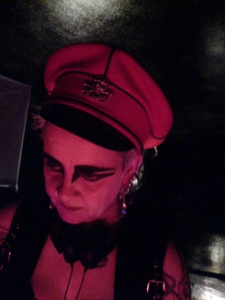
In this final blog-episode about the influence of Punk on Design I intend to highlight some of our own designers who are clearly influenced by Punk. I’ll start by mentioning one or two that emerged directly from the movement that followed the first few seeds sprinkled by the like of Vivienne Westwood and Jamie Reid, who I spoke about in the last episode.
The influence of fanzines like Sniffing Glue cannot be overlooked. Mark Perry, who was also the singer in Punk Band, Alternative TV started his fanzine in the summer of 1976, when the Punk Rock scene was at its most vibrant stage. At that time there was no media positively covering the emerging scene (although the mainstream British press were doing a good job of filling their front pages with outrage and condemnation). The amateurish and scrappy layouts took the whole ethos of Punk and applied it to magazine layout. Anyone could do this, all you needed was some paper, a marker pen, a creative mind, passion and a photocopier. In terms of layout and design there were no limits, to restrictions, no rules. It was a complete disregard for established “rules” of design” that allowed designers to wipe the slate clean and start again with a fresh new look.
It’s American counterpart, Punk ran for slightly longer, till 1979. This had a slightly more considered, “designed” look, using cartoonist, John Holstrom’s fabulous Crumb-esque characatures of the likes of Iggy Pop, The Ramones, Debbie Harry and Lou Reed to adorn it’s pages. It was slammed for being light-weight in comparison to it’s British counterparts. It was quite weak and was run as a business so lacked the passion and energy that Sniffing Glue was oozing with. But that shouldn’t detract from some excellent imagery produced by the artist-in-residence.
It wasn’t long before trained Graphic Designers started to adopt the styles and freedom that Punk provided. The first example that really stood out for me was the cover of a single by Manchester band, The Buzzcocks. The image on the cover was a collage created from body parts from porn magazines, torn and composited, collage-style; the head of the woman was replaced with an iron. The image was designed by Linder Sterling, an artist and collaborator on the fanzine, Secret Public. Sleeve designer, Malcolm Garret who had just left art college was responsible for the Bauhaus-inspired typography, composition and color choices. He went on to design all the subsequent covers for the Buzzcocks, then Duran Duran, Peter Gabriel and others. Malcolm really got the punk style established and has had continued success as one of our most well respected typographers and designers.
Other designers followed in the same vein. Neville Brody left college in 1980, where he designed posters for bands including the Human League. He went on to design artwork for post-punk bands like Depeche Mode and was catapulted to huge success after his work on the Face magazine. He is now an established graphic designer and typographer designing style for huge brands like the Guardian newspaper, and having work exhibited at the Victoria and Albert Museum.
Peter Saville was another contemporary who designed sleeves for Joy Division, New Order, Ultravox and developed the influential style of Factory records. His minimal style still looks current when placed next to contemporary designs.
So, these are a few examples of designers who have carried the influence of Punk through to today. I’m sure I’ve missed a few gems so please feel free to submit comments, inspirations and ideas. You can look everywhere to see design influenced by Punk and I’d love to see some of your own examples and comments.
Angie’s Shuffle track of the day – Blondie, Rip Her To Shreds – listen free on Last FM

Last week I spoke about the influence of punk in motion graphic design, the Punk rock revolution in the UK and how inspiring it was to young people like me. Today I’ll talk about some of the great designers who emerged from that scene. I’ll start by looking at two of the key players who defined the style of the Punk Rock movement in the UK.
There’s not one person responsible for the style of Punk, it was a coming together of minds and styles. A collective, group activity gained momentum, and as a result, the various styles of the people involved merged into an established fashion. But the pivotal people were the ones who recognized the elements that would excite and brought them together with style, panache and, of course an eye for design.
The punk movement grew out of a basic disillusionment, with the establishment, the music scene, fashion, the media. What better way to show your dissatisfaction than to tear it all up and start again? That’s exactly what punks did. Essays on design refer to this as Deconstruction. This wasn’t a new concept, post-modern art movements like the Dadaists and, ironically, the Constructivists used techniques of disassembly and reassembly to shake up the status quo and embrace a new way of looking at things.
In New York in the early seventies, bands like the New York Dolls would dress up in womens clothes in an attempt to shock away the apathy that existed in the music scene. Richard Hell was the one who became a blueprint for thousands of young punks, defining the spikey hair and ripped t-shirt look before anyone else. But it was really Vivienne Westwood who took the look and developed it into a recognizable style. Now one of our top designers, she started off with a small clothes shop on the Kings Road in London. She and Malcolm McClaren owned Let it Rock, a shop selling biker gear and teddy boy clothes. In 1974 this was revamped and renamed SEX, catering to the S&M scene and positioning itself nicely to shock the nation and take punk rock to the headlines.
The Sex Pistols hung out in the shop and that’s where the whole thing took off, the band formed, McClaren became the manager, and Vivienne designed clothes for them under the label, Seditionaries – it was a symbiotic relationship. At Art School Malcolm McClaren met Jamie Reid, a political activist and Situationist who was producing a radical magazine called Suburban Press. He used a cut and paste style of graphics in this magazine, and it was then that he defined his trade-mark ransom-note lettering that was made famous by the Sex Pistols first album Never Mind the Bollocks, Here’s the Sex Pistols.
In the next installment we’ll take a look at the designers who emerged from, or were directly influenced by the Punk movement.
Patti Smith – Smells Like Teen Spirit, listen free on Last FM
Hi all,
Just to let you know that my blog has moved temporarily to the following address.
Please subscribe to the RSS feed, I’ll be updating it on a weekly basis.
http://www.gridironsoftware.com/blog
Click on this link and then the link to ‘Angie’ for my latest ponderings.
cheers,
Angie
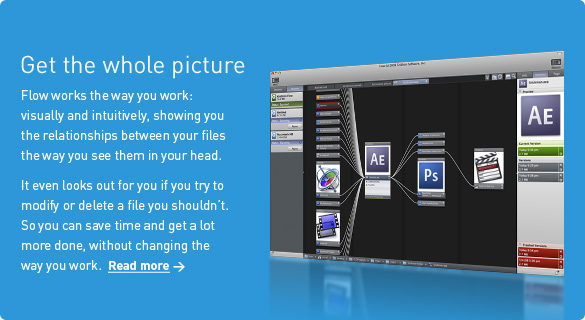
On December the 8th I start work with Gridiron Software as their European Creative Director.
It’s all very exciting and scary at the same time. Big changes for me but I’m really ready for a new challenge and this role seems ideal as it incorporates a creative role with software design and development – so it’s right up my street.
I start in December and will be full-time with GI but they are still allowing me to take on creative projects as part of the deal. I will also still be able to offer my services as a demo artist to other companies on a partner basis.
Part of my job will be promoting a brand-new, revolutionary software product named Flow. I’m very excited about Flow as there’s nothing else quite like it out there and I reckon it will change the people connect with software.
I’d love to hear some feedback about Flow from anyone in the industry so if you get a chance to check it out please follow this link.
http://www.gridironsoftware.com/Flow
 years but that’s it, no more am I paying a premium for a service that’s no better than the budget airlines. Sorry, digressing but had to get that off my chest! I mean, it’s not a G&T without ice and lemon, really!
years but that’s it, no more am I paying a premium for a service that’s no better than the budget airlines. Sorry, digressing but had to get that off my chest! I mean, it’s not a G&T without ice and lemon, really!












